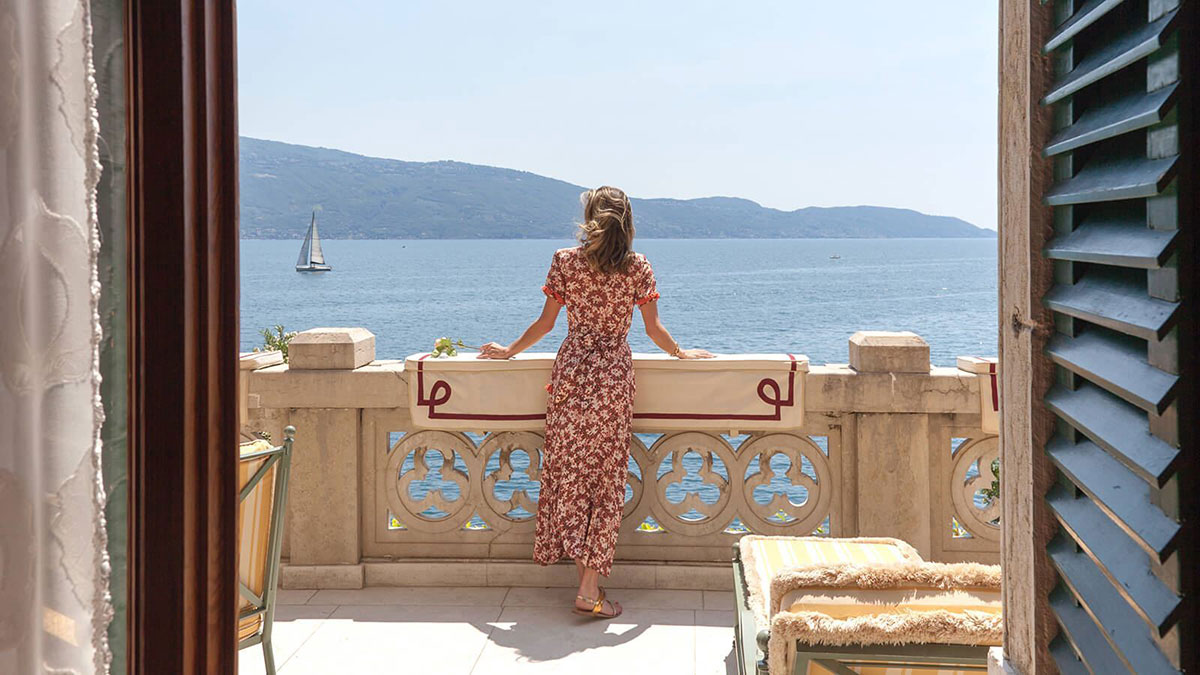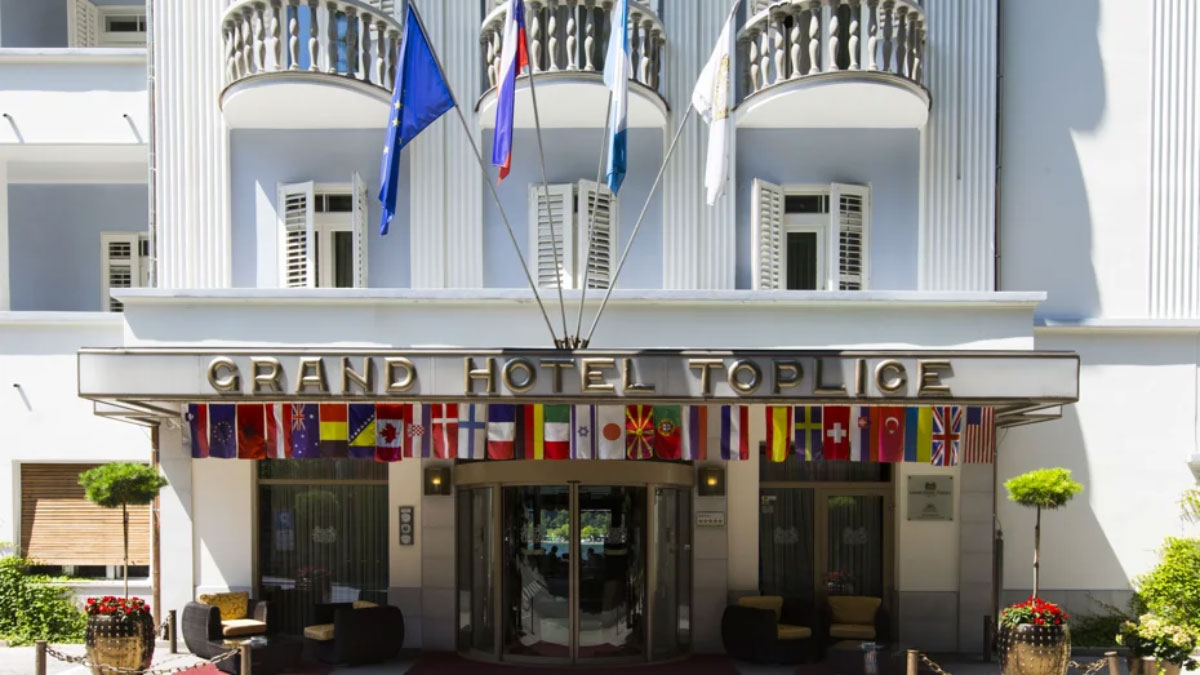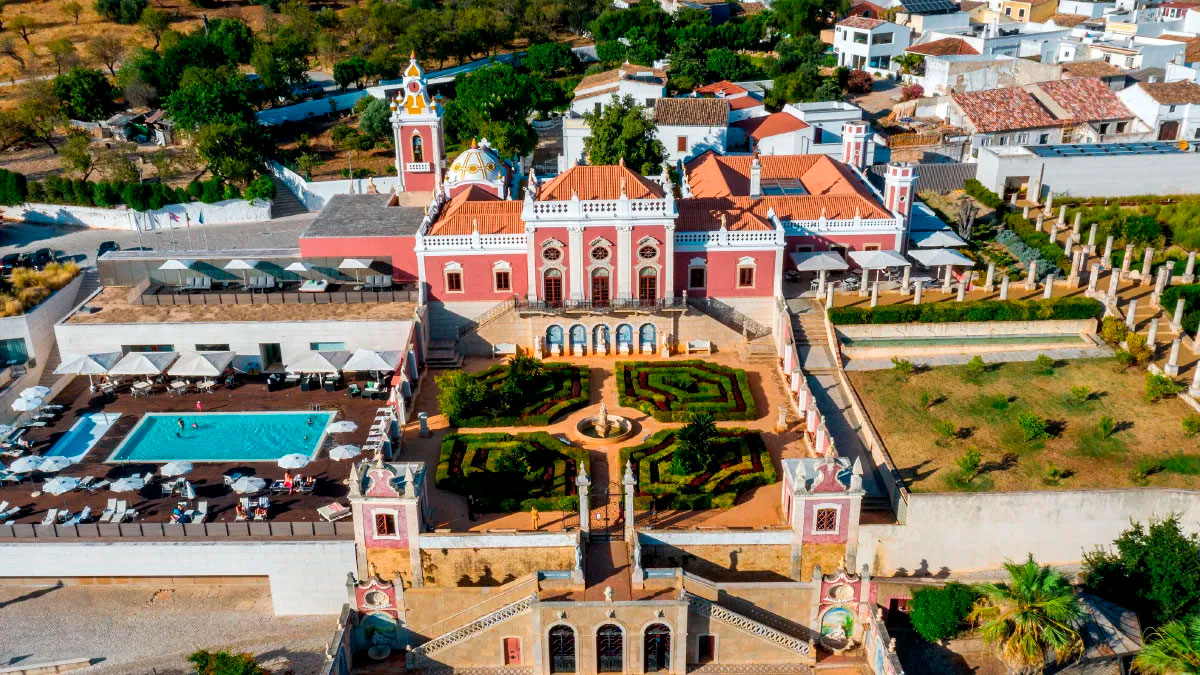“Eternal moments” is the expression that greets us when we enter the virtual portal of the Grand Hotel Villa Feltrinelli, to which we turn our attention in this new instalment of our section on hotels of the world. It is a building that holds a piece of Italian and European history, and therefore could well earn a place in eternity. Located in the north of the country, on the western shore of Lake Garda in the small town of Gargnano, province of Brescia, Lombardy region, the Grand Hotel Villa Feltrinelli is a very special place, not only for its history, but also, as we shall see, for the particularities of its management.
The main building of the Grand Hotel Villa Feltrinelli was originally the summer residence of one of the richest lineages in industrial Italy at the time. From a sawmill founded at the beginning of the 19th century, the Feltrinelli family became involved in the urban development of the city of Milan and the construction of the Italian railway with their timber production. Their business expanded into banking (with the founding of Banca Feltrinelli), and they came to own several companies including Credito Italia, Edison, Bastogi, the construction company Ferrobeton Span, and the Feltrinelli Legnami timber company.
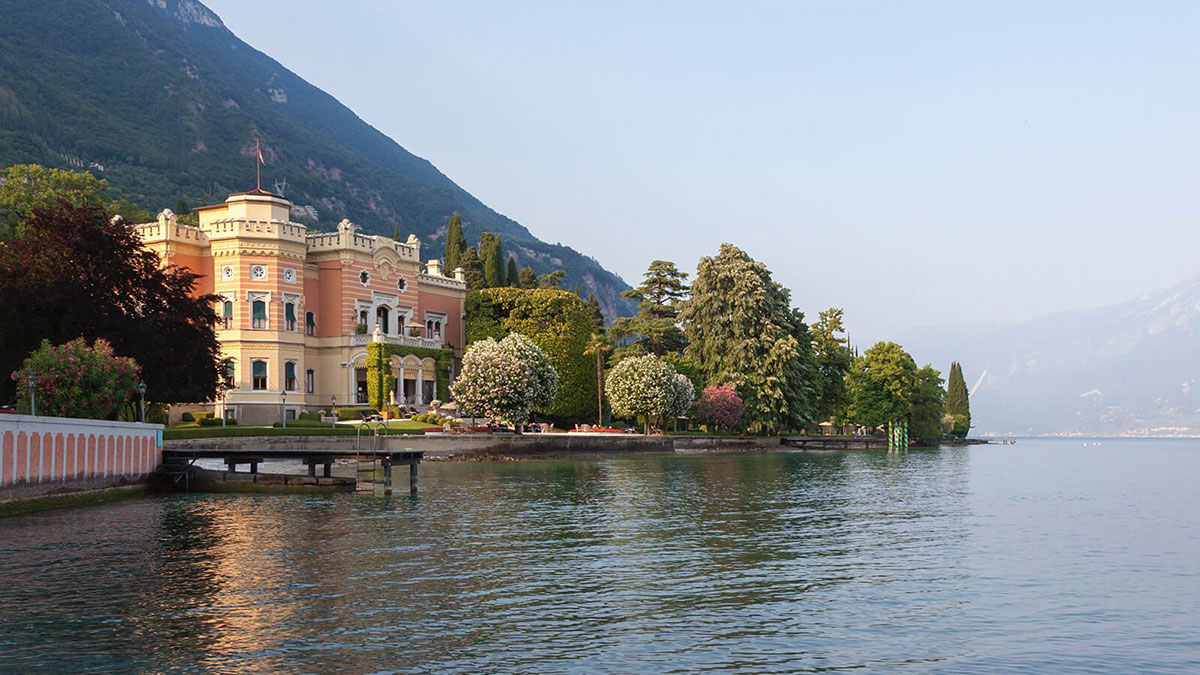
Built between 1892 and 1899 by order of Giacomo Feltrinelli (one of the twelve brothers belonging to the second generation from the founder of the original sawmill) and attributed to the architects Francesco Solmi and Alberico Belgiojoso, the architecture of Villa Feltrinelli is eclectic in character with neo-Gothic echoes and a general neo-Romanesque appearance. The crenellated crown, a terrace with balustrade overlooking the lake, triple lancet, mullioned and round star windows, stone cornices and striped canvases make up the façades of the house. As for the interiors, the Feltrinelli family personally supervised their design and construction. Various craftsmen of the period were responsible for the intricately carved wooden panels and ceilings, the coffered ceilings, the polychrome stained-glass windows and the frescoed ceilings.
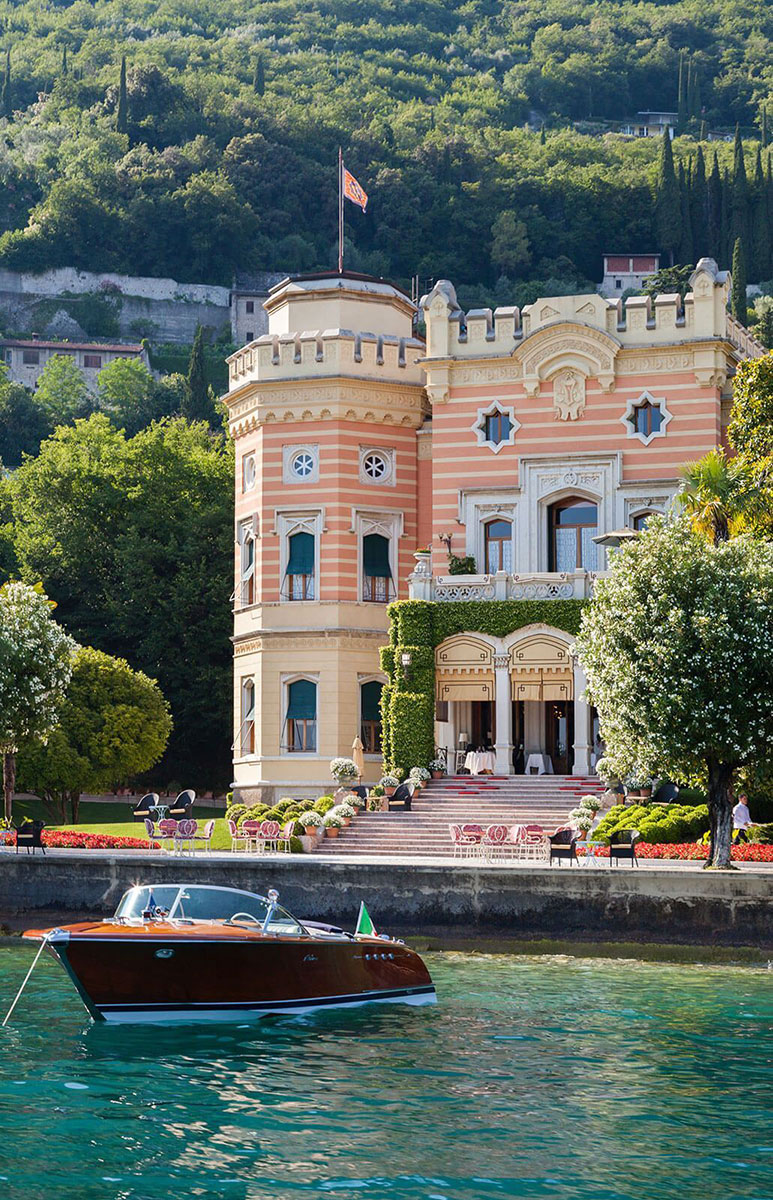
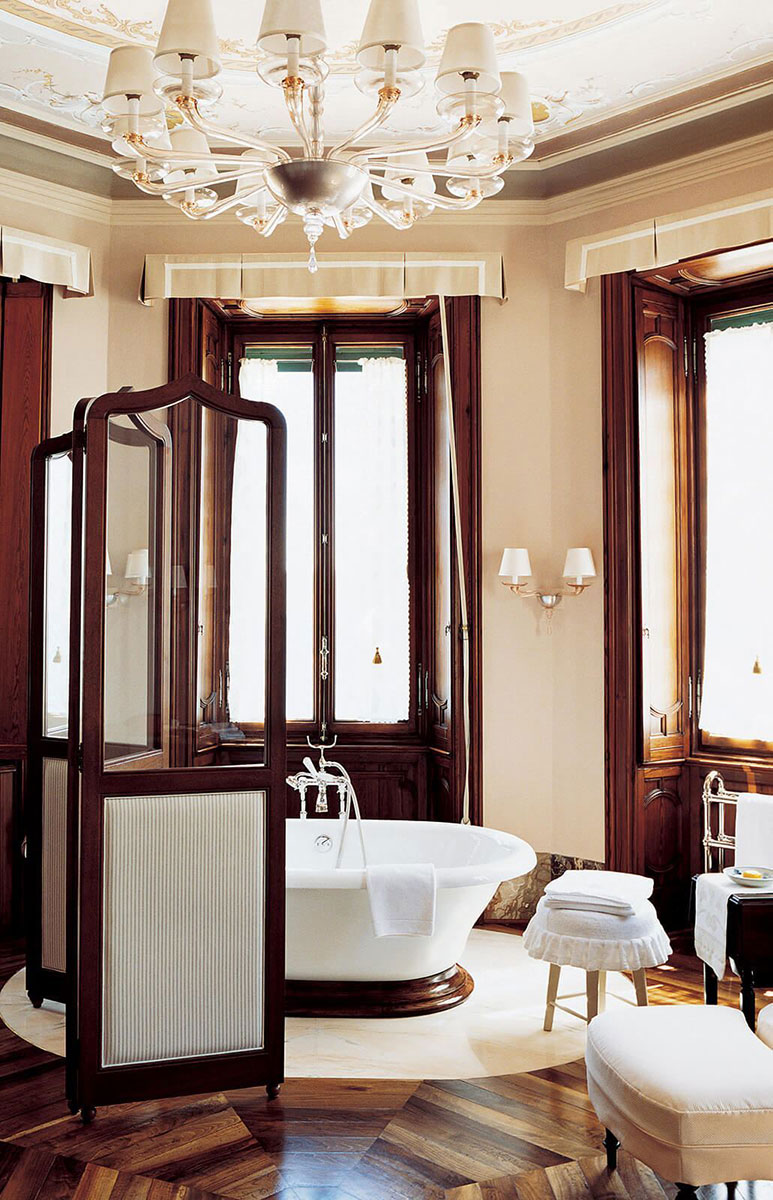
The hotel, which has remained largely unchanged since it was built, has 20 rooms and 80 employees (two per guest). “We only allow events with a up to 40 guests, no more,’ Markus Odermatt, the hotel’s general manager since 2001, told 032c magazine, adding, ‘it isn’t possible to book 10 rooms with us, either [as] that would create a group of 20 people, which would make the other 20 guests feel like they were second-class”. In this respect, Odermatt insists, “we see ourselves as being a cradle of intimacy“.
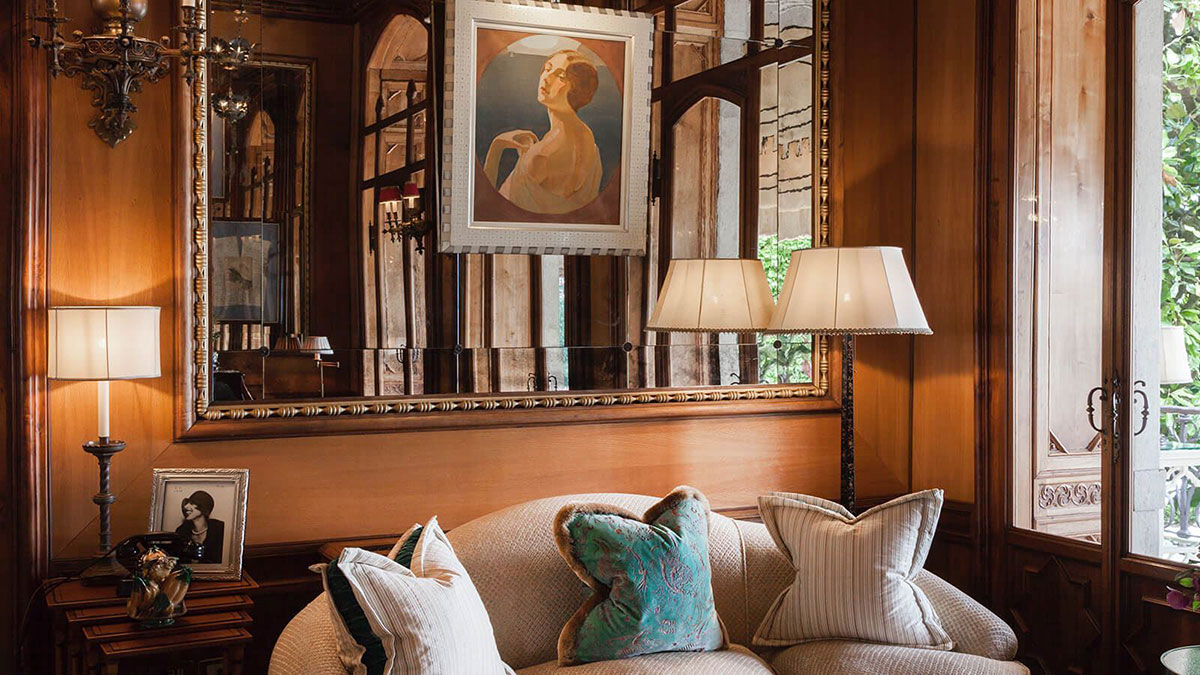
It is Odermatt himself who recounts, in his interview with Sven Michaelsen for 032c, the vicissitudes that led to the creation of the Grand Hotel Villa Feltrinelli. According to his account, Regent Hotels owner Robert H. Burns, after selling at 63 years old, “his life’s work” to the Four Seasons hotel chain for an estimated $300 million, sought refuge in Italy for his retirement. After buying Villa Feltrinelli in 1997 for $3.5 million, he felt the building was too big for him alone. It was then that he decided to turn the mansion into a boutique hotel “the likes of which the world had never seen before”. To do so, Odermatt says, he invested $35 million during a four-year renovation overseen by Italy’s historic preservation office.
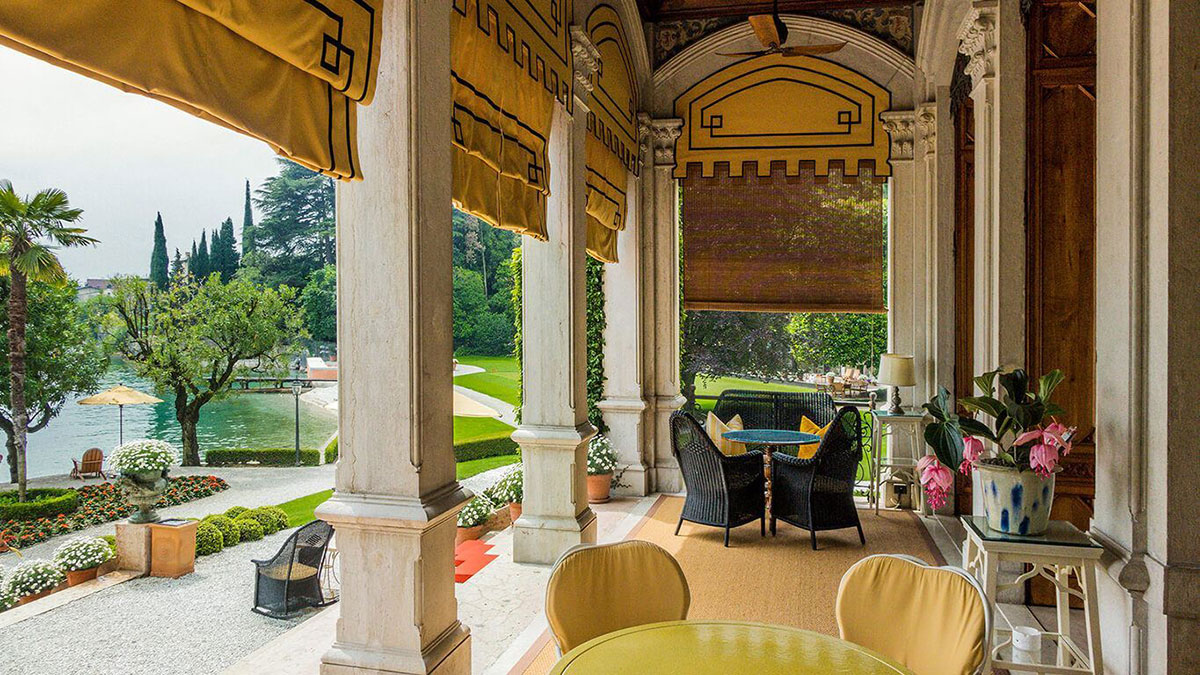
However, although the architecture, the magnificence of its decorations, the exquisite service and the setting contribute to providing “eternal moments” for its guests, Villa Feltrinelli offers much more to those who are curious enough. As early as 1950 it became the residence of the heir to the Feltrinelli empire, perhaps one of the most peculiar members of the dynasty. Giangiacomo Feltrinelli was an Italian politician and communist activist, founder and commander of the guerrilla group Gruppi d’Azione Partigiana in the Italy of the so-called ‘Years of Lead’ (Anni di piombo).

But, according to Michaelsen’s introduction to Odermatt’s interview, Giangiacomo was also drawn to his second great passion: books. So, in 1955, he founded the Feltrinelli Editore publishing house and turned the villa into a centre of universal culture frequented by writers and intellectuals such as Saul Bellow, Tennessee Williams, Umberto Eco, Max Frisch and Ingeborg Bachmann. It was his publishing house that published Giuseppe Tomasi di Lampedusa’s bestseller, The Leopard, and Boris Pasternak’s Doctor Zhivago. It also published authors as diverse as Che Guevara, Nadine Gordimer, Gabriel García Márquez, Günter Grass, Michel Foucault, Rudi Dutschke, Doris Lessing and H. Chí Minh.

Before all this turmoil, however, towards the end of World War II, Villa Feltrinelli found itself at the centre of European history, when the house became the residence of Benito Mussolini. The annals tell how, after the German army occupied northern Italy under Hitler’s command, the Nazi ruler reinstated the Fascist ruler as the leader of a puppet government to protect the southern flank of the German-occupied territories. So, on 8th October 1943 (the time of the Italian Social Republic), under heavy guard, the seat of the Italian government and Mussolini’s personal residence were established in Villa Feltrinelli.
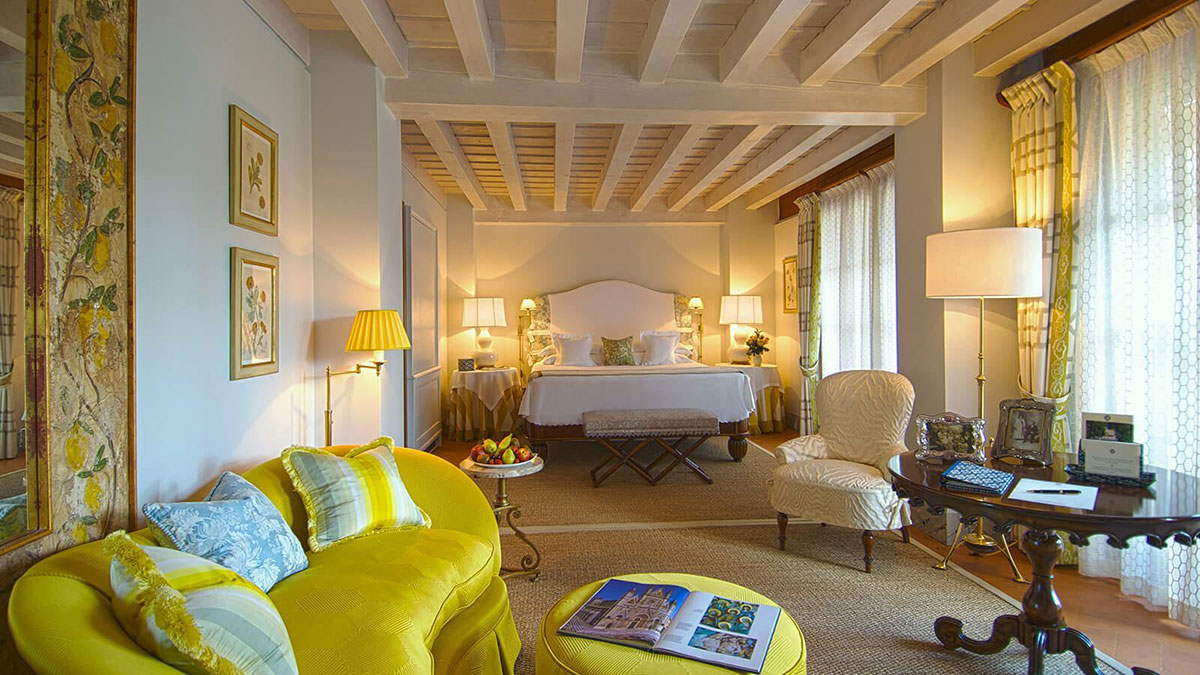
Countless anecdotes and stories revolve around these events and this place, although for reasons of space we cannot mention them all here. We will leave you with just one of them, an account Odermatt gives to the magazine 032c through Michaelsen, his interviewer: “in 2003, a man rang the buzzer at the entrance gate (…) claiming to be Mussolini’s son. (…) When the receptionist didn’t believe him, he asked whether he could speak to the director. (…) I ran to the gate to first get a look at him (…). He said that he wanted to sit behind the piano for a few moments again, having played that piano every day between 1943 and 1945, often accompanied by his father on violin. (…) Standing in front of me was a man in his mid-70s – he was not in very good shape – and something told me that this story could be true. And in fact, it really was Romano Mussolini, a celebrated jazz musician who had played with Chet Baker, Dizzy Gillespie, Duke Ellington, Lionel Hampton, and Caterina Valente, and who had married Sophia Loren’s sister”. According to the director of the Grand Hotel Villa Feltrinelli, the old man played the piano for half an hour, then walked around the house and left. “He never came back. Three years later, he was dead”.
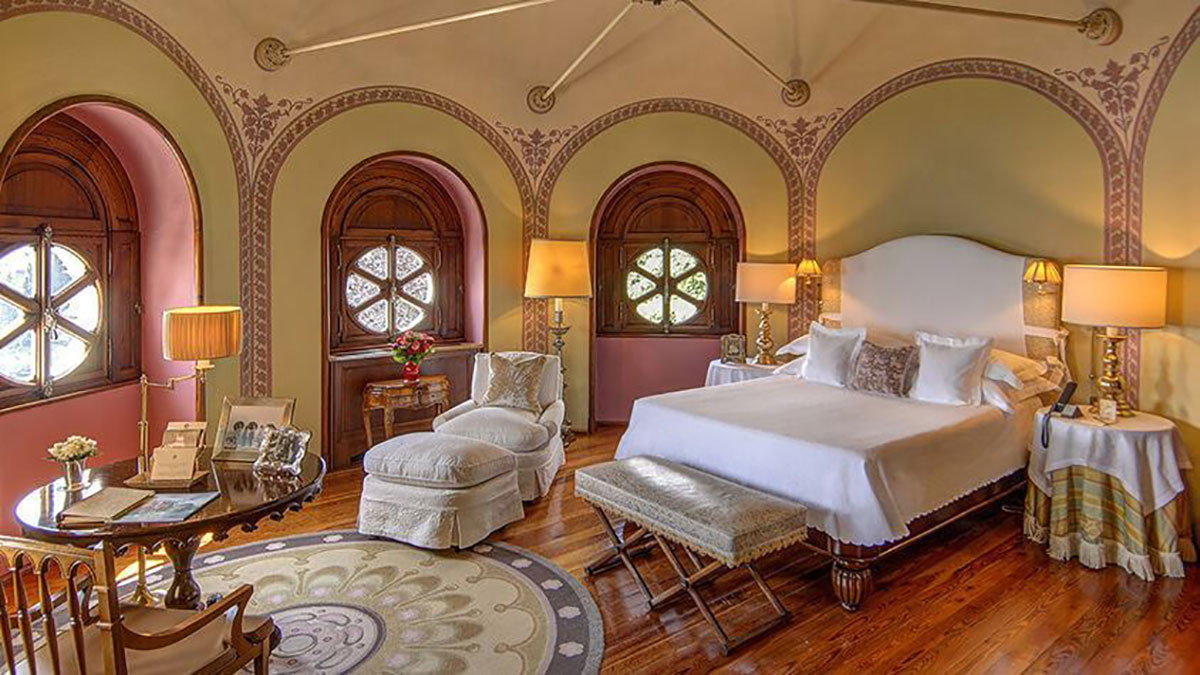
Sources: 032c Magazine, Wiki Comuni Italiani, Villa Feltrinelli, This is Gargnano.
Images: Villa Feltrinelli.
